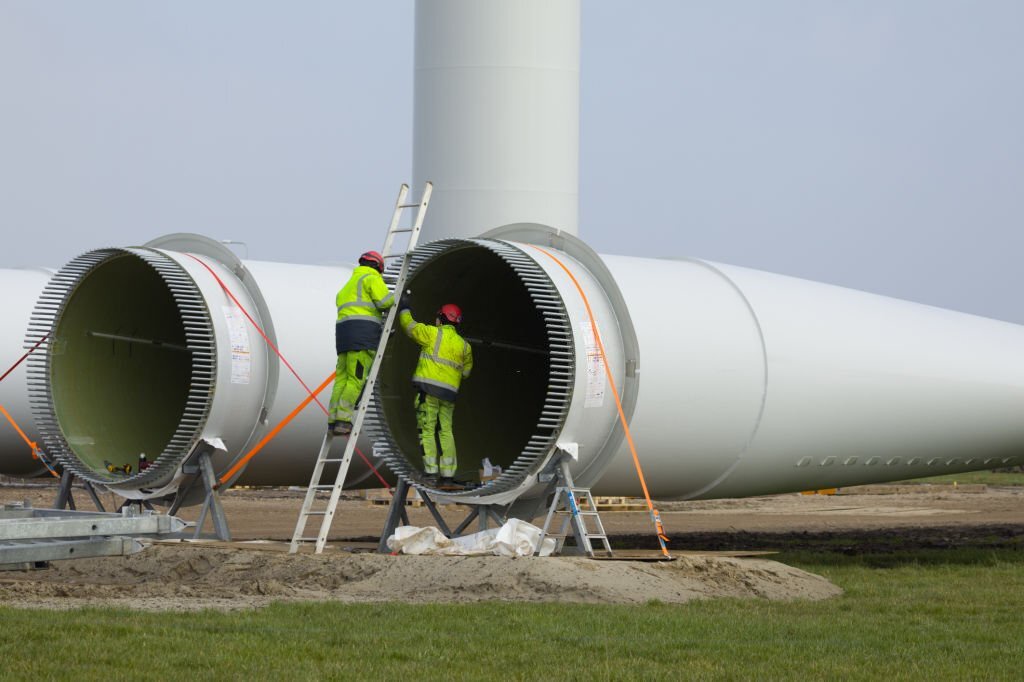Turbines play a crucial role in the generation of electricity, converting the energy of moving fluids into mechanical energy. Over the years, turbine engineering has made tremendous advancements, enabling the production of highly efficient and reliable machines that are capable of delivering large amounts of power. In this blog, we will take a closer look at the principles of turbine engineering and how it has evolved to meet the growing demands of modern energy generation.
The Basics of Turbine Engineering:
A turbine is essentially a machine that harnesses the energy of a moving fluid and converts it into rotational energy. This rotational energy can then be used to generate electricity or perform other mechanical tasks. The most common types of turbines used in energy generation are steam turbines, gas turbines, and hydro turbines.
Steam turbines work by using high-pressure steam to turn a turbine rotor, which is connected to an electrical generator. The steam is generated in a boiler, where water is heated to create steam. The steam is then piped to the turbine, where it flows over the rotor blades, causing them to rotate. This rotation is transferred to the generator, which produces electricity.
Gas turbines services , on the other hand, use the energy of hot gases to turn a rotor. In a gas turbine power plant, air is compressed and mixed with fuel, which is then burned to produce high-temperature gases. These gases are then used to turn the turbine rotor, which is connected to an electrical generator.
Evolution of Turbine Engineering:
Over the years, turbine engineering has evolved dramatically, driven by the need for more efficient and reliable energy generation. Here are some of the key developments in the field of turbine engineering:
-
Increased Efficiency:
One of the primary goals of turbine engineering has been to increase the efficiency of the machines. With better understanding of fluid dynamics and materials science, engineers have been able to design turbines that are capable of extracting more energy from the moving fluid. For example, modern steam turbines use high-pressure steam and high-efficiency rotors to extract as much energy as possible from the steam.
-
Improved Reliability:
Another important aspect of turbine engineering has been to improve the reliability of the machines. By using advanced materials and manufacturing techniques, engineers have been able to create turbines that are capable of operating for longer periods of time without the need for maintenance or repair.
- Advancements in Combustion Technology:
The evolution of turbine engineering has also been driven by advancements in combustion technology. For example, the development of low-emission combustion systems has made it possible to burn fuel more efficiently, resulting in less pollution and lower greenhouse gas emissions.
-
Integration with Renewable Energy Sources:
In recent years, there has been a growing interest in integrating renewable energy sources into the energy grid. Turbine engineering has played a crucial role in this by developing machines that are capable of extracting energy from wind, solar, and other renewable sources.
-
Development of Micro-Turbines
: Another important development in turbine engineering has been the development of micro-turbines. These small, highly efficient turbines are capable of producing electricity on a smaller scale, making them ideal for use in remote locations or for small-scale energy generation.
Benefits of Gas Turbine Power Plants:
- Gas Turbine Power Plants have a low operational cost because when they are operated at high temperatures, they use less fuel which makes the process cost-effective and economical.
- Gas turbine power plants need less maintenance as compared to others to stay operational.
- They are more efficient and durable due to their compact structural design and can be installed in a small space.
- Gas Turbine Power plants use carbon capture technologies to reduce greenhouse emissions which produce very few pollutants.
Commissioning, Operation, and Maintenance of Gas Turbines:
Before commissioning, all the types of equipment and electrical auxiliaries shall be Scrutinized for efficient operability. The verification of all the instruments mounted in the gas turbine must be performed. The piping networks around the gas turbine should be properly cleaned. Gas turbines are usually commissioned by using fuel gas or if the gas turbine is dual fuel then the commissioning could be done using liquid fuel. Before starting the operation of gas turbines, the auxiliary systems including the control and power panels should be commissioned and ensured to be fully functional. The instructions should be followed precisely by the commissioning team. After the process of commissioning, the turbines will be handed over to the operations and maintenance staff.
In a Nut Shell:
Turbine engineering is an important branch of engineering that has had a significant impact on our daily lives. The use of turbines in energy production and industrial processes has greatly improved energy efficiency, power generation, and the overall reliability of these processes. Additionally, turbine engineering has contributed to the creation of jobs and economic growth, and it has helped to reduce the dependence on fossil fuels and mitigate climate change. The future of turbine engineering is bright, and it will continue to play a critical role in powering our world.


No comments yet